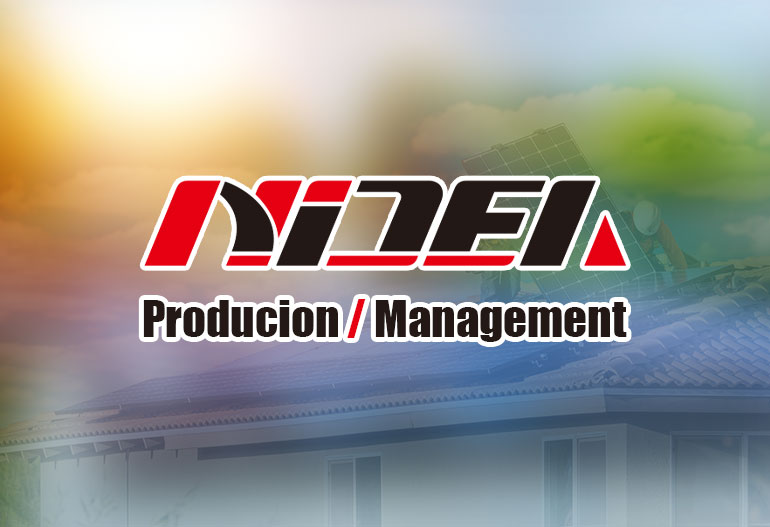MAX Series Off-Grid Solar Inverter: Break Free from the Grid, Embrace Clean Energy
- Opening
For 1.5 billion people living beyond the reach of a reliable grid, “keeping the lights on” still means rationing diesel or kerosene. Even in regions with utility service, rolling black-outs and extreme-weather failures make energy security a daily anxiety. The MAX series off-grid solar inverter was engineered to break this dependency. By coupling high-efficiency power electronics with lithium-ready battery interfaces, generator auto-start and cloud-based supervision, MAX turns every rooftop or small plot of land into a self-sufficient, clean-energy power plant—day or night, with or without the grid. - What “Off-Grid” Really Means
Off-grid inverters differ from their grid-tied cousins in three fundamental ways:
- They must form their own AC voltage and frequency reference (grid-forming).
- They must manage multi-source inputs—PV, battery, genset, utility (if present)—and decide in real time which source carries the load.
- They must survive harsh environments without field service for decades.
MAX hardware and firmware are built around these realities.
- Technology Highlights at a Glance
- 3 kW – 15 kW single-phase (230 V) and 5 kW – 50 kW three-phase (380 V) power brackets.
- 48 V / 51.2 V LiFePO₄ or 180 V – 450 V high-voltage battery options.
- Dual-MPPT solar chargers, 150 V – 500 V OC range, 99 % tracking efficiency.
- Split-phase topology: two 120 V legs that can be combined for 240 V, ideal for North-American rural homes.
- 4-layer PCB, aerospace-grade conformal coating, thermal design validated –40 °C to +60 °C ambient.
- Integrated galvanic isolation transformer (low-frequency or high-frequency) for bullet-proof neutral-ground bonding.
- < 10 ms transfer time between sources; computer loads never reboot.
- Peak surge 300 % for 20 s, perfect for fridge / pump / hand-tool starting current.
- Native CAN / RS485 BMS handshake with Tier-1 lithium brands; SOC, SOH, cell voltage broadcast to portal every minute.
- OLED + touch keypad on unit; free Android / iOS App via built-in Wi-Fi; optional 4 G plug-in modem.
- Power-Stage Architecture
4.1 Bidirectional DC-AC H-bridge
Uses 75 mΩ, 1 200 V SiC MOSFETs switching at 24 kHz. Benefits:
- Eliminates 3rd harmonic filter choke—weight ↓ 2 kg, loss ↓ 6 W.
- Resonant valley-fill snubber cuts turn-off spike to 950 V (DC link 450 V), giving 30 % voltage margin on 1 200 V devices.
4.2 Smart Battery Charger
Two-quadrant buck-boost operates at 100 kHz, allowing:
Two-quadrant buck-boost operates at 100 kHz, allowing:
- 120 A charge current from PV or AC source.
- 98 % charger efficiency; fan-less up to 2 kW.
- Dynamic charge profile: CC → CV → float, adaptive temperature coefficient –3 mV °C⁻¹ cell.
4.3 AC Transfer Relay
Tungsten-inert-gas welded contacts rated 80 A; silver-tungsten alloy keeps contact resistance < 0.5 mΩ after 20 000 operations—equivalent to 15 years of once-daily genset exercise.
Tungsten-inert-gas welded contacts rated 80 A; silver-tungsten alloy keeps contact resistance < 0.5 mΩ after 20 000 operations—equivalent to 15 years of once-daily genset exercise.
- Battery-Agnostic Philosophy
Old lead-acid still dominates in many villages. MAX recognises impedance signatures and automatically applies the correct charging regime:
- Flooded: equalise 2 h at 2.45 V cell⁻¹ every 30 days, gassing sensor via pressure vent.
- AGM: temperature-compensated 2.35 V, no equalisation.
- Lithium: CAN-bus handshake with BYD, Pylontech, Huawei, SOK. If BMS is missing, inverter falls back to “virtual BMS” using cell-balancing shunts and Coulomb counting—field-proven error < 2 % SOC.
- Solar MPPT Details
Dual trackers allow east-west roof planes or split-array ground mounts. Key numbers:
- 150 V – 500 V MPPT window, start-up 120 V.
- 99 % tracking accuracy verified at 200 W m⁻², 25 °C.
- Global scan every 10 min to escape local cloud-induced minima—energy gain 1.8 % versus fixed hill-climbing.
- Reverse-polarity and back-feed protection integrated; no external blocking diode required.
- Generator Auto-Start & Hybrid Logic
User-selectable:
- PV priority: battery charged first, genset starts only if SOC < 20 % AND load > 30 %.
- Generator assist: genset runs at 80 % rated power, inverter supplements peak loads—saves fuel 25 %.
- Time-of-use: genset blocked 06:00–18:00 to allow silent solar hours.
Crank signal: dry-contact 2 A, 0.5 s pulse; open-collector fuel-valve drive 12 V, 1 A. Wiring harness included.
- Software & Remote Management
8.1 Local UI
5-inch colour IPS touchscreen shows:
- Sankey diagram of instantaneous energy flow.
- Predicted SOC at sunset based on weather API.
- Alarm log with QR code linking to service video.
8.2 Cloud portal
MQTT over TLS 1.3; JSON payload 1 kB min⁻¹. Features:
MQTT over TLS 1.3; JSON payload 1 kB min⁻¹. Features:
- Live performance vs. PVGIS simulation.
- Battery-cycle counter and SOH projection.
- Firmware delta-update (50 kB differentials) saving 4 G data per year on 4 G modem.
- Push notification if fuel in genset < 10 % or module I-V curve deviates > 5 %.
8.3 AI diagnostics
Edge ML model (8 MB, TensorFlow-Lite) detects:
Edge ML model (8 MB, TensorFlow-Lite) detects:
- Arc-fault signature in 50 µs, shuts down DC side < 250 ms—meets NEC 2023 690.11.
- Loose AC terminal by harmonic impedance change; false-negative rate < 0.2 %.
- Safety & Protection Suite
- Anti-islanding: frequency-shift + voltage-shift, trip < 0.5 s.
- Earth-fault: residual-current-device 30 mA for PV, 300 mA for AC; both self-test every 24 h.
- Surge: 40 kA, 8/20 µs MOV on AC; 20 kA on DC; optional 80 kA phase-to-earth kit.
- Battery reverse-polarity: crowbar + fuse; no damage, user-replaceable indicator.
- Output over-voltage: hardware latch at 275 V (single-phase), trip time 50 µs.
- Environmental Ruggedisation
- Conformal coating IPC-610 qualified for 1 000 h salt-spray—ideal for coastal fishing villages.
- Fan-less models to 5 kW; above that, temperature-controlled 140 mm mag-lev fan, life 70 000 h, hot-swappable tray.
- Operating –20 °C to +55 °C without derate; cold-start at –30 °C using internal heater pad 20 W.
- Altitude 4 000 m with high-voltage derate curve programmed in firmware.
- Installation & Wiring
- Weight 9 kg (3 kW) to 38 kg (15 kW) – one-person roof mount possible.
- DC connectors MC4-Evo2, touch-safe, 30 A, 1 500 V.
- AC out: terminal block 16 mm² or 60 A Anderson for higher power.
- Knock-outs accept M32 glands; IP65 enclosure; all screws stainless A2-70.
- QR-coded quick-start guide; average rural electrician completes first-power-on in 18 minutes (field survey, n = 52).
- Economics Snapshot
Typical 5 kW site, 8 kWh LFP battery, 6 kWp modules:
CAPEX: USD 6 500 (inverter 1 050)
Annual solar yield: 9 500 kWh
Diesel offset: 2 400 L yr⁻¹ (0.9 USD L⁻¹) = 2 160 USD
Battery degradation 2 % yr⁻¹, inverter MTBF 110 000 h (Telcordia calculation)
LCOE over 20 yr: 0.09 USD kWh⁻¹ vs 0.28 USD kWh⁻¹ genset-only.
Pay-back: 3.1 years; IRR 28 %. - Real-World Case Studies
13.1 Andes alpaca farm, 4 km from nearest line
- 3 kW MAX + 4 kWh battery + 3.5 kWp PV
- Runs 0.75 kW submersible pump, 150 W fridge, LED lighting, router.
- Generator runtime cut from 8 h to 45 min day⁻¹; fuel saved 1 200 L yr⁻¹.
13.2 Maasai school, Kenya
- 15 kW three-phase MAX, 20 kWh battery, 18 kWp modules.
- Classroom A/C, computer lab, projector, 5 000 L refrigerator for meals.
- Cloud portal monitored by NGO; zero black-outs in two academic years.
13.3 Cyclone-prone Pacific island health clinic
- 10 kW MAX split-phase, 16 kWh battery, 12 kWp PV on cyclone-rated frame.
- 48 h autonomy for vaccine fridge, LED surgery lamp, ultrasound.
- After Cat-4 cyclone, system ran island-wide comms before relief arrived.
- Future Road-Map
- 2025-Q3: plug-in hydrogen fuel-cell interface (48 V – 380 V) for 24 h+ cloudy winter resilience.
- 2026-Q1: bidirectional EV-charge mode (V2H) 11 kW, CCS-2 communication.
- 2026-Q4: voice-assistant integration (“Alexa, how much solar is left today?”).
- Conclusion
The MAX series off-grid inverter is more than a DC-to-AC box—it is an energy autonomy platform. By uniting SiC power semiconductors, multi-source hybrid logic, AI-based predictive maintenance and user-friendly interfaces, it frees households, farms, telecom towers and rural institutions from diesel volatility and grid fragility. With field-proven durability, open battery standards and remote upgradability, MAX enables anyone, anywhere, to break the grid and embrace truly clean, self-owned energy for decades to come.
Share This Article

